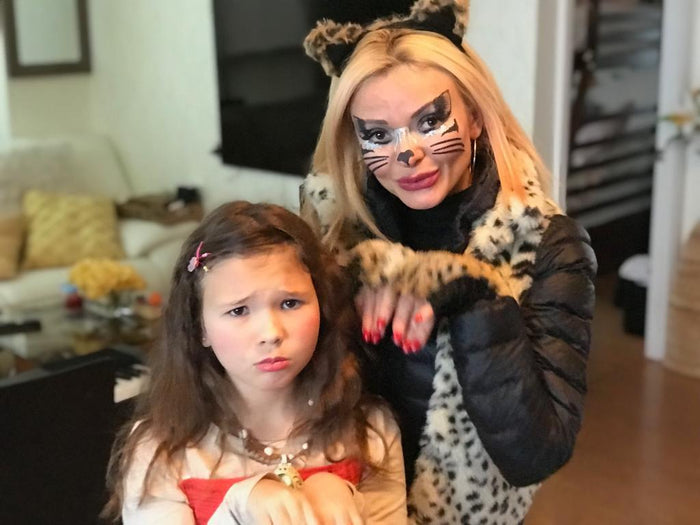Some time ago, a friend and I were having a discussion on Instagram about some of the terrible headlines in recent years. We were questioning how the world got to where we are today, and what we could do to raise kids who would grow up to make things better.
Our conclusion? We need to teach our children empathy.
In 2006, then-senator Barack Obama noted how addressing a national “empathy deficit“ could bring us closer together. He said:
“I think we should talk more about our empathy deficit – the ability to put ourselves in someone else’s shoes; to see the world through the eyes of those who are different from us – the child who’s hungry, the steelworker who’s been laid off, the family who lost the entire life they built together when the storm came to town. When you think like this, when you choose to broaden your ambit of concern and empathize with the plight of others, whether they are close friends or distant strangers; it becomes harder not to act; harder not to help.”



Put simply, empathy is recognizing and sharing in another person’s feelings. The key component of empathy is the experience of putting yourself in another person’s shoes—to be able to understand how they feel by imagining yourself in their place.
People often confuse empathy with sympathy and compassion, but there are subtle differences. Sympathy means recognizing someone’s emotions, but empathy takes it a step further—with empathy, you feel the same emotion as the other person because you can imagine yourself in their place. And compassion takes this further still—when you are compassionate, you feel the need to act on another’s emotions to help relieve their suffering.
The difference may seem small, but it’s not. In order to effect true change in the world, we need to first recognize the condition of others, fully understand the weight of a person’s situation—best done by imagining ourselves in the same scenario—and then feel compelled to act.
This isn’t just a wishy-washy, hippie-dippie, “heal the world” type of thing (although I don’t know about you, but that makes this conversation worthy enough to me). No, people who are skilled at feeling empathy and compassion are better leaders, better entrepreneurs, better parents, and better friends. A child who learns empathy and compassion grows into an adult with the kind of full, successful life every parent hopes their child will lead.
So how do we teach empathy and compassion to our kids?


Before you can learn to empathize with someone else, you first have to be able to label the emotions that you feel yourself. If you can’t identify your own feelings, empathizing with another’s is impossible.
When it comes to learning how to label emotions, we have to help young kids find the right words.
My favorite approach with young children is to give them the words without necessarily telling them what they feel. Rather than saying, “You’re feeling sad,” ask instead: “Are you feeling sad?” You’re still giving your child the words to help her define her feelings, but you’re not telling her what she feels—you’re not imposing your interpretation on your child. By giving your interpretation in the form of a question, you’re leaving open the possibility that you’ve misunderstood, which can certainly happen.
This approach works with other emotions, too: “Are you feeling angry right now?” “Are you feeling happy?”
Notice that I suggest saying “are you feeling ___” rather than “are you ___.” It’s a subtle difference, but inserting the word “feeling” implies that this is a temporary thing, it’s a momentary emotion. Rather than “I am sad,” or “I am a sad person,” it’s “I’m feeling sad right now.” There is always an opportunity for an emotion to change.
With older kids, you can use the same approach. You may also wish to give them a bit more space by phrasing it this way: “It looks to me like you’re feeling angry right now. Is that right?” And you can give even more room for your child or teen to label his own feelings by saying: “It seems to me that something’s up. What are you feeling?”
The follow-up to all of this, no matter how old your child is, can be: “Tell me why you’re feeling ___,” or “Show me why you’re feeling ___.” Not only does this help you learn more about your child, it teaches her about the cause and effect of emotions—that certain situations or events can stir up feelings inside her. This sets up the building blocks for later recognizing that the same cause and effect happens to other people.
Helping kids become more aware of their own feelings is the first step to developing empathy and compassion toward others.


Once your child can begin to label his own feelings, the next step is helping him recognize emotions in other people. This next step is teaching your child sympathy.
For the youngest of kids, everyday life is packed with big emotions, making common experiences the perfect teaching ground for learning sympathy. When your child’s playground pal falls down and cries, point that out. “It looks like Emmett is sad. Does he look sad to you?” As your child gets more adept at communicating emotions, you can ask her how she thinks events make others feel. “Emmett took the toy from Molly. How do you think Molly feels right now?”
But the absolute best tool for a child of any age to recognize others’ emotions is through stories and books.
Reading books with your kids is such a wonderful way to open up meaningful conversations with them, especially discussions about emotions and values. You can start off with emotions that would be easily guessed. For example, when you’re reading Harry Potter and the Sorceror's Stone, ask your child how she thinks Harry feels when he first catches the Snitch. Happy, excited, proud—all things you might easily recognize.
Then, as your child gets better at recognizing emotions in others, ask about situations that are a little less clear or that might give several different answers. Sticking with Sorceror’s Stone, ask your child what Neville might be feeling when Malfoy steals his Remembrall. Might he be sad? Angry? Embarrassed? All of these could easily fit the situation, yet all are very different emotions.
Once your child offers her thoughts on what a character is feeling, ask her why she thinks that way. Her answers will not only encourage her to think more deeply about her response, they’ll also give you insight into how your child thinks and interprets emotional situations.


Feeling what another person feels by imagining yourself in their position is the key component of empathy.
In a sense, empathy is the most straightforward of these skills to teach. Many parents even do it naturally. How many times have you chastised your child for doing something to someone else by saying, “How would you feel if [that other person] did that to you??”
Most of us heard something like this at least a few times in our youth (some of us more than a few times!). And yet, it’s clear that occasional lessons in empathy sandwiched in the midst of a scolding aren’t quite effective enough to make empathy a permanent, automatic skill in everyone—otherwise the world wouldn’t have the empathy deficit it has today.
That’s why it’s so important that, just like with teaching sympathy, we make it a consistent habit to use everyday occurrences and stories as opportunities to teach empathy.
When your child witnesses something happening to another child, ask her how she might feel if that had happened to her instead. “Emmett took Molly’s toy. If someone took your toy, how would you feel? I wonder if Molly feels that way right now.”
When reading a story, you can drive empathy home by asking your child if he’s ever experienced the same situation as a character in the book. “Hermione heard Ron say that ‘no one can stand her’ and that ‘she’s a nightmare.’ Was there ever a time when you heard someone say something mean about you? How did that make you feel? Can you imagine how Hermione must feel? I wonder if that’s why she is crying in the bathroom.”
There are endless opportunities in daily life and in books for you to encourage your kids to imagine themselves in someone else’s shoes—which means that your child can build her empathy muscles each and every day.


The final step in this process is to encourage your child to take his empathy and make a difference—to teach him compassion.
To feel compassion is to feel the need to help relieve another’s suffering or to help change their situation. Thus, to be compassionate is to be a problem-solver.
To help your child develop compassion, come back to those everyday situations and stories and ask your child what she could do to help. “Okay, so Molly is feeling sad. How could you help her feel better?”
The answer doesn’t have to be a grand gesture. Any response your child gives—“I could give her a hug,” “I could see if she wants to play with me”—is perfect, as long as the intent is to act on the sympathy and empathy to help that other person feel better.
You could take this compassion-building exercise a step further and inspire your child not just to be a problem-solver, but also problem-preventer.
“Hermione was sad because of what Ron said. How could things have been different so she didn’t have to feel sad in the first place?”—to which your child might respond: “Ron could have not said those mean things about her.”
Teaching your child to be both a problem-solver and a problem-preventer encourages her to build compassion. It shows her that actions can have consequences, that it’s important to address those consequences when other people are hurt, and it’s even better to keep possible consequences in mind and prevent them from the start.


We often, whether purposefully or not, keep our kids inside a bubble. We shield them from the news. We read them stories that we curate. We censor their music as long as we can.
And yet, there are some kids and adults who don’t get the opportunity to live inside this bubble. They’re living the news. They don’t get to hear the fairy tales. The lyrics are based on the neighborhoods where they’re growing up.

As your kids become ready or if discussions come up, talk to them about what’s going on in the world outside their door. Don’t necessarily censor a teen’s music—listen to it, point out the parts that don’t jive with your family’s values, and go through the steps above. Travel as much as you are able—whether it’s to another country or the town nextdoor—so that your children see that the world is full of points of view and experiences that are different from their own.
By exposing your children to the world in age-appropriate ways, you’re giving them the opportunity to take what you’ve practiced at home and apply it to the world around them.
And always:
Read, read, read; be observant so you can notice teaching moments as the arise; and spark conversation. By making life a constant dialogue with our kids, and by consistently reflecting on stories and experiences—real and imaginary—we can help our children develop the superpowers of empathy and compassion.
We can, with the right effort and love, raise a generation of kids who can change the world.
Reference: Dr. Steve Silvestro, MD



































